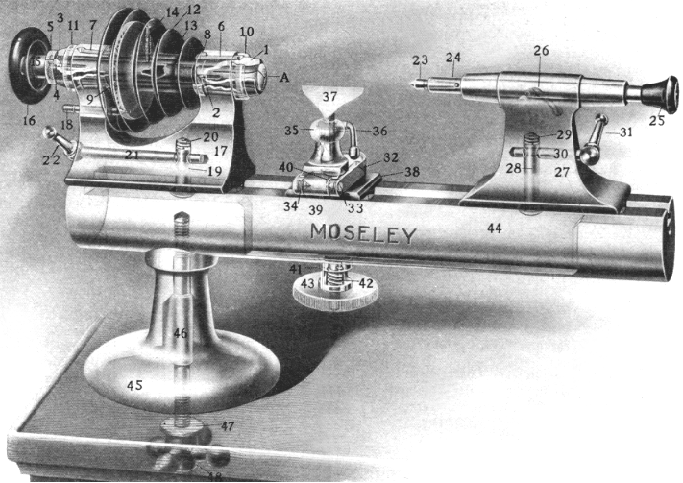|
Home Machine Tool Archive Machine-tools Sale & Wanted - some general notes with a list of manufacturers and useful accessories - watchmaker's lathe can be ordered here |
|
|
Unfortunately, although there have been many genuine makers of lathes for watchmakers, a lot of "badge engineering" went on where dealers and distributors commissioned batches of lathes for themselves. A well-known example from England was George Adams of London - who sold and re-branded mainly German-made machines - and G.Boley, who offered their "bevelled-bed" model for re-badging by importers - two examples being the "English" Rawco and Telco. This situation was compounded by several parts and accessories being interchangeable between different makers - so a lathe has been "made up" from others either casually over many years of ownership, or unscrupulously by a "dealer". However, it's very unlikely that the bed, headstock and tailstock will be from different manufacturers, but if they are, be wary. |
|
Should you have a lathe from those below marked with the maker's name shown in red, the writer would be pleased to hear from you. Perhaps an example of each will, eventually, be found |
|
Sawyer (USA) |
||

|
"WW" type with parts as annotated by the maker.
|

|
|

|
|
||

|
|


|
|

|
An English-made BTM "Geneva" pattern watchmakers' lathe (note the bar-like bed with, in this case, a flat at the back) complete in its maker's fitted wooden box with a range of useful accessories. The item top left in the box is that most valuable of extras - a compound rest, used to hold a cutting tool manipulated under the control of screw-feed slides. |
||

|
Boley Lathe No. 1b. A "WW" pattern lathe of a heavier pattern, admitting 230 mm between centres, and with feet at both end of the bed. On this model the compound slide was fitted as part of the standard equipment. |
||

|
Another Boley but this time equipped for production work with quick-action levers fitted to the collet closer, compound slide and tailstock. The tailstock also has an indexing 6-station toolholder and the cross slide toolposts at front and back. |
||

|
A later type of Boley & Leinen "Reform" lathe, manufactured from the early 1950s. This mouth-watering outfit was listed as the No. 77/X1V and contains virtually everything a skilled watch-repair man could wish for including, top left, a second headstock fitted with a permanently mounted (and hence very accurately aligned) faceplate with three clamps or "dogs". |

|
A Swiss-made Bergeon Model C of the "Geneva" type. This example is fitted with a compound slide rest to hold the cutting tool, a lever-action tailstock and, to assist with very small work, a magnifying glass held on an articulated arm. Bergeon is the only indigenous Swiss manufacturer of watchmakers' lathes to have survived into the 21st century. |
||


|
- some general notes with a list of makers and useful accessories - Home Machine Tool Archive Machine-tools Sale & Wanted |